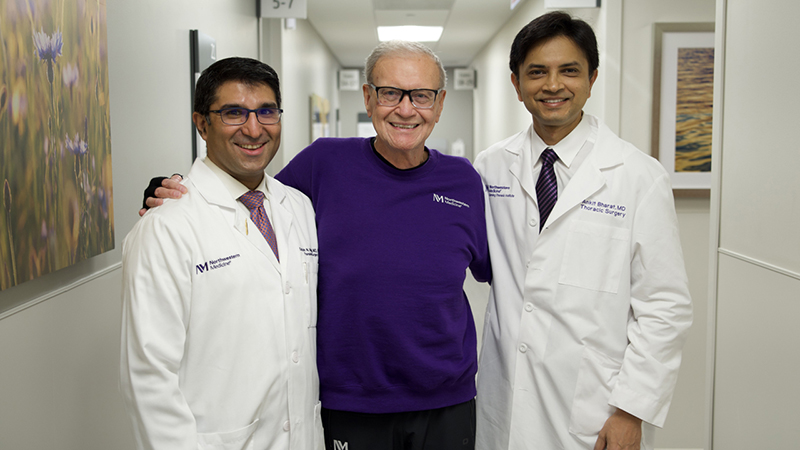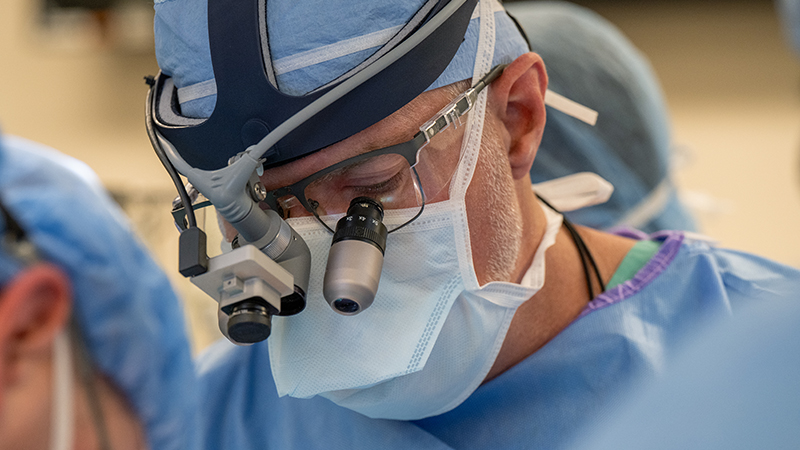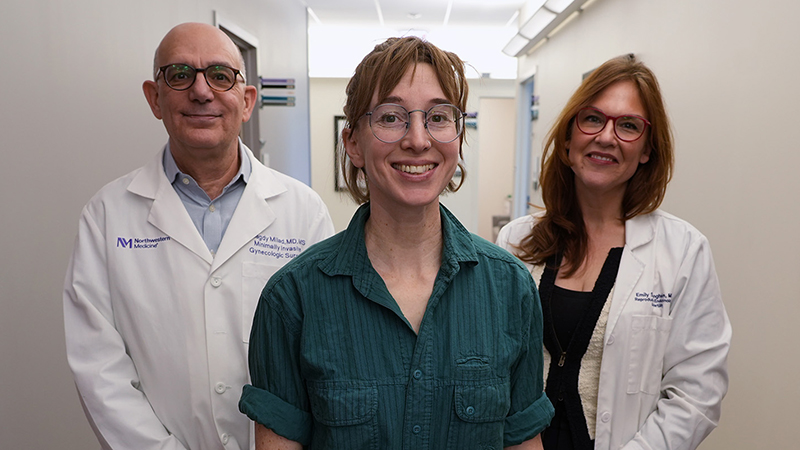A More Precise Treatment for Eye Cancer
A Preschool Teacher Chooses Proton Therapy
Updated March 2024
While on the phone with her husband's eye clinic to confirm a pick-up location for his contact lenses, Wendy Hennessy, a preschool teacher and resident of Naperville, Illinois, asked about setting up an eye appointment for herself.
Wendy, who was 55 at the time, had never worn prescription glasses or seen an eye doctor, but she often found herself squinting to see better. She thought it might be time to get a checkup.
The treatment itself lasted about four minutes.— Wendy Hennessy
Wendy booked an appointment for the following Monday, ready for an uneventful visit.
"When they were doing the exam and I covered my right eye to read the chart. I couldn't see the chart. The technician was surprised and made the letters larger. I still couldn't see anything straight on — just peripherally," says Wendy.
The technician called in an ophthalmologist and within an hour, Wendy was talking to a retina specialist who was on staff at the eye clinic.
"The specialist did an ultrasound and confirmed that there was a very small mass behind my left eye," explains Wendy. "That was why I couldn't see the chart unless both of my eyes were open."
The mass was blocking her central vision, but still allowed her to see out of her left eye peripherally.
According to the American Cancer Society, only 3,360 people in the U.S. will be diagnosed with eye cancer in 2022. Wendy's ophthalmologist says that her cancer likely started with a freckle in the back of her eye (called choroidal nevus) that turned cancerous, just like it can on the skin. Eyes have the same melanin-producing cells as skin, which can develop cancer. When this type of cancer develops in the eye, it is called ocular melanoma.
Treatment Options
Wendy was referred to an ophthalmologist specializing in ocular oncology. After more testing, the specialist gave Wendy three treatment options:
- Surgical enucleation: A surgical team would remove her left eye.
- Radioactive plaque therapy: A gold disk with radioactive seeds attached is placed on the eye over the tumor, then photon radiation is emitted. The gold disk keeps photons aimed toward the tumor to decrease damage to surrounding healthy tissue.
- Proton radiation therapy: A beamed radiation therapy that uses protons, which are positively charged atomic particles that can be precisely controlled to release much of their energy directly in the tumor, reducing damage to nearby healthy tissue.
Wendy was determined to go with an eye-sparing treatment and chose proton therapy at Northwestern Medicine Proton Center in Warrenville, Illinois. After an exam and further testing, her care team scheduled five consecutive days of proton radiation treatment for Wendy.
"Proton therapy is an excellent treatment for melanomas in the eye because it controls the tumor while leaving the eye in place with minimal side effects and minimal radiation exposure to surrounding healthy tissue," explains Stephen A. Mihalcik, MD, PhD, a radiation oncologist at Northwestern Medicine. "Proton therapy allows you to preserve the eye and still get the same cure rate as if the eye was removed."
"I sat in a chair and looked at a little light while music was playing in the background," says Wendy. "It was like getting a CT scan while you hold for a few seconds to have a machine take a picture. The treatment itself lasted about four minutes, and the technicians made me feel so comfortable. You could just see their compassion."
After Treatment
After proton therapy, Wendy's tumor shrank and lost pigment, which signaled that the cancer cells were dying. Wendy's tumor destroyed the vision in that part of her left eye, and the tumor was replaced by scar tissue, which means Wendy's vision will remain obstructed. She still has peripheral vision in her left eye, which helps with depth perception.
"I am legally blind in my left eye and that will never come back," says Wendy. "I am grateful that the tumor was found before it metastasized."
Nearly 18 months after treatment, Wendy remains cancer-free and follows up regularly with her care team. She has resumed her work as a preschool teacher, and she is able to drive.
"I'm doing great, and I'm thankful for all of my doctors and the people along the way who helped me through this experience. The outpouring of support I received was just incredible," says Wendy. "One of the best parts? At home, I pretend I can't read recipes or grocery lists so I don't have to cook!"




